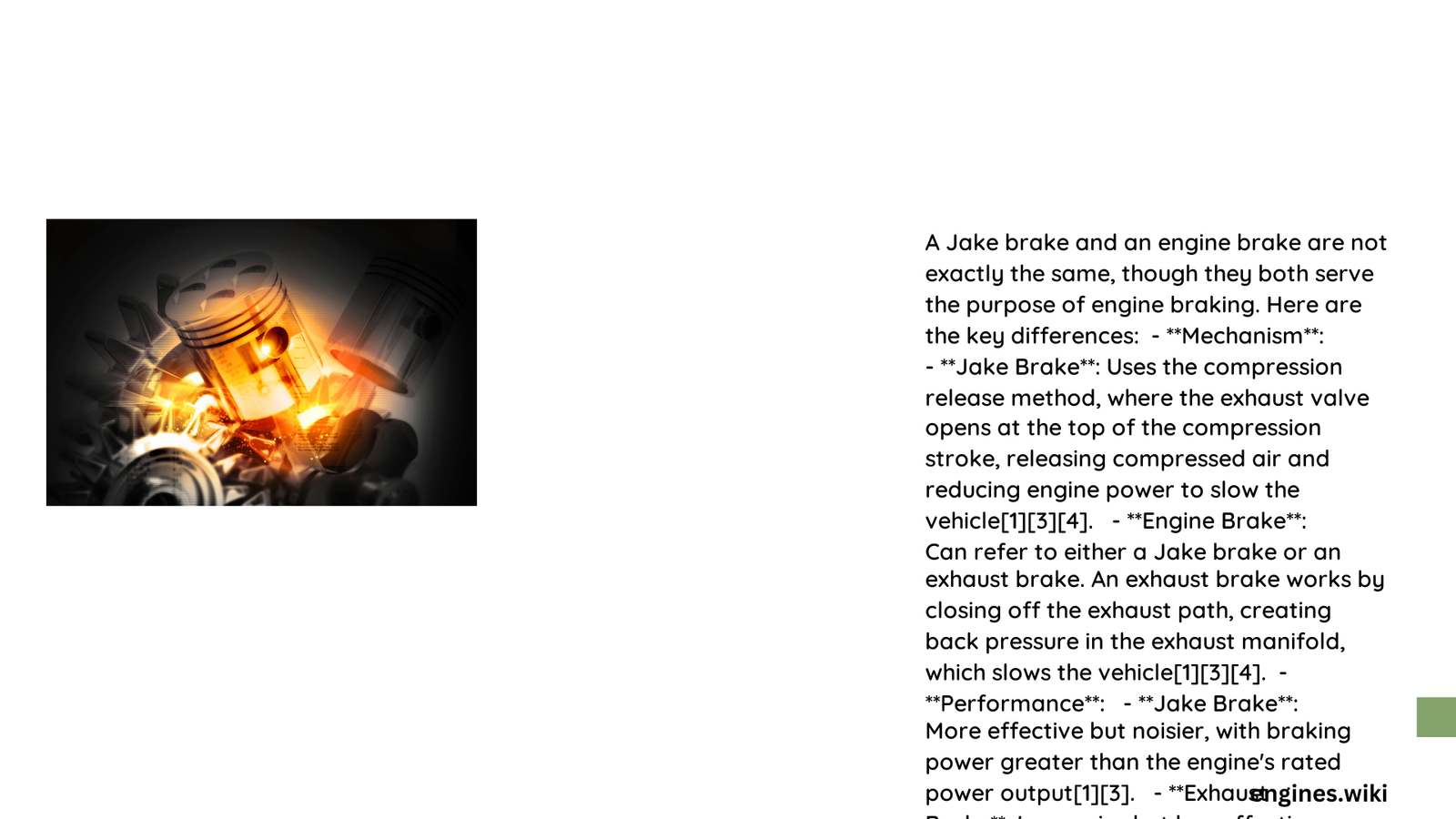Vehicle braking technologies often confuse drivers and mechanics alike. Jake Brake and Engine Brake represent sophisticated compression release mechanisms that provide powerful vehicle deceleration by manipulating engine compression cycles, offering an alternative to traditional friction braking systems. Understanding their nuanced relationship reveals critical insights into advanced automotive engineering and performance optimization.
What Exactly Are Jake Brake and Engine Brake?
Jake Brake, a trademarked compression release engine braking system developed by Jacobs Vehicle Systems, is fundamentally identical to the generic term “Engine Brake” in operational principles. Both technologies utilize engine compression to slow down vehicles, particularly effective in heavy-duty applications like semi-trucks and commercial vehicles.
How Do Jake Brake and Engine Brake Function?
Compression Release Mechanism
- Operational Principle: Modifies four-stroke engine cycle
- Process: Opens exhaust valves during compression stroke
- Energy Absorption: Releases compressed air instead of allowing fuel injection
| Component | Jake Brake | Engine Brake |
|---|---|---|
| Core Technology | Compression Release | Compression Release |
| Noise Level | High | Moderate to High |
| Effectiveness | Excellent | Excellent |
What Makes Jake Brake Unique?
Jake Brake specifically refers to Jacobs’ patented technology, while “Engine Brake” represents the broader category of compression release braking systems. Key distinguishing factors include:
- Trademark Specificity
- Jake Brake: Proprietary technology by Jacobs
-
Engine Brake: Generic technical description
-
Noise Characteristics
- Jake Brake: Distinctively loud compression release
- Engine Brake: Variable noise levels
Why Use Compression Release Braking?
Performance Benefits
- Reduced friction brake wear
- Enhanced vehicle control during descents
- No additional fuel consumption
- Significant retarding power at various engine speeds
Are There Legal Considerations?
Many municipalities restrict Jake Brake usage in residential areas due to excessive noise. Drivers must be aware of local regulations governing compression release braking systems.
Technical Performance Metrics
A 15-liter engine can generate:
– 180 kW (244 horsepower) retarding power at 1,200 rpm
– Up to 630 horsepower retarding power at 2,200 rpm
Comparative Analysis: Jake Brake vs Exhaust Brake
| Feature | Jake Brake | Exhaust Brake |
|---|---|---|
| Braking Mechanism | Compression Release | Air Restriction |
| Effectiveness | High | Moderate |
| Maintenance | Complex | Simpler |
| Noise Level | Very High | Low |
Conclusion: Technical Equivalence

While “Jake Brake” is a specific brand name, it has become synonymous with engine braking technology. The fundamental mechanism remains consistent: using engine compression to decelerate vehicles efficiently.
Key Takeaways
- Jake Brake and Engine Brake operate on identical principles
- Both provide powerful vehicle deceleration
- Performance varies based on engine specifications
- Local regulations may impact usage
Reference:
– Jacobs Vehicle Systems
– Trucking Industry Technical Resources
– Automotive Engineering Journal
